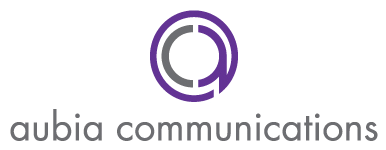 When my husband and I moved from São Paulo to outside of Zürich about five months ago, we experienced severe culture shock. From the weather to the landscape to the people, everything that could possibly be different was exactly opposite. It should come as no surprise than Public Relations in Brazil and PR in Switzerland differ in varying ways from how PR is practiced in the U.S.
When my husband and I moved from São Paulo to outside of Zürich about five months ago, we experienced severe culture shock. From the weather to the landscape to the people, everything that could possibly be different was exactly opposite. It should come as no surprise than Public Relations in Brazil and PR in Switzerland differ in varying ways from how PR is practiced in the U.S.
Switzerland is a wealthy nation that is more reserved than most. From my short time here, I’ve come to understand that though the Swiss people are courteous, it is not easy to establish a relationship (as is the exact opposite in Brazil). I’ve been given the explanation that the Swiss are slow to trust, but once they do, you have a friend for life.
In a country that is about 10 times smaller than California, the multicultural landscape is expansive. Regions are divided by the four national languages of German, French, Italian and Romansh, which is an ancient language only spoken by less than 1 percent of the nation. English is also widely known, but an understanding of the language sensitivities is a must to successfully work here.
PR is growing in Switzerland, and though it may not be as advanced as it is in the States, it is well on its way as larger firms begin to open offices here. I returned to the LinkedIn Group for Media Diplomat to find practitioners to speak with about the differences in PR between Switzerland and the U.S. I had the opportunity to speak with three professionals who have worked in both countries, with foreign colleagues or a combination of both. Jacqueline Pash is the head of Corporate Communications at Swiss International Air Lines in New York City, Susanne Mühlemann is the head of Media Relations and Internal Communications at Swiss International Air Lines in Zürich, and Michaela Ruoss is the media coordinator for North America at Switzerland Tourism in New York City.
1. How is PR practiced in Switzerland?
Mühlemann: At SWISS, we provide clear and transparent responses to all media queries in the effort to maintain and strengthen the image of the high-quality carrier that we are. We do this through media events, such as our recent press conference to announce our end year results and the ordering of a new plane model series. We also use email press releases and pitches, which we typically distribute in German, French and English. Finally, we still very much use media trips to show journalists new aspects of our product, the capabilities of our aircraft or a new destination.
For media interviews, we prepare our management with key topics and attend the interviews with them, and we do review direct quotes before the articles are published. In press conferences, however, we don’t ask to review the quotes. When we have good relationships with reporters, we are asked to provide fact checks, but we don’t change the object of the articles.
Ruoss: Public Relations in Switzerland is all about building relationships. When I pitch media members, I try to give them what I liked when I was a journalist: fast replies and reliable answers. It’s about helping journalists write a good and unique stories by tailoring the pitch to theirs and their consumers’ needs.
2. What are the main differences, in your opinion, of how PR is practiced in the U.S. and Switzerland?
Pash: In working with U.S. and Swiss journalists, I find that reviewing articles before they are published is much more of a common practice in Switzerland than the U.S. Media exclusives seem to be more of a common practice in the USA, yet depends on information at hand. Finally, PR in the USA is more multi-faceted, meaning journalists wear many hats at the same time—traditional and social media. Unfortunately, the majority of writers are not the highest paid and must look especially today for a variety of venues – all good for us. Recently, in the last few years, there has been a large increase in the use of social media in Switzerland.
Mühlemann: Though our online media is growing a lot and fast, in Switzerland we still depend heavily on print media. We have the highest density of newspapers per capita in the world, and we focus a lot of effort on the Zürich-based publications as they are the largest and most read in the country. I imagine our relationships with media are maybe a bit more open and transparent here, whereas in the U.S. it’s still more focused on maintaining the image of an organization.
Ruoss: The competition in the U.S. PR market is so much more than in Switzerland. There are so many more publications and journalists to seek out and develop relationships with, and I find it’s actually easier to do this in Switzerland. You pick up the phone more in Switzerland and call, but in the U.S. it’s always email or automated voice. Following up on pitches in Switzerland is also more acceptable.
With a smaller media market, it’s easier to get to know journalists in Switzerland. There are fewer publications, so you can read and really know what Swiss reporters are interested in. Staff turnover is much less there, too, than here in the U.S.
3. What are the similarities?
Pash: I see a continued focus both in Switzerland and the U.S. on the importance of developing and nurturing relationships with media members. Whether it is “liking” an item on Facebook or sending an e-mail with info—journalists welcome the occasional shout-out and meaningful information. With both Swiss and American journalists, we use press releases, material embargoes, press conferences, events and in the USA have a social media journalist following.
Mühlemann: I can imagine that both American and Swiss PR professionals use the same basic methods of media interaction, such as press releases and pitches. Our main form of communication with journalists is the telephone and email, though we do always call to follow up.
Ruoss: We all strive to build relationships as a strategy for effective PR. I see journalists in both Switzerland and the States requesting exclusives, and we do use them in both countries.
4. What do you predict are the major developments for PR in Switzerland in the next five year?
Ruoss: As social media keeps growing, we’ll need to learn how to leverage its use better for PR in Switzerland. I also see PR companies becoming even more focused on relationships with and service for journalists and communities. This, in turn, will also bring about more appreciation for what journalists do and how their industry is changing.
5. What are the major challenges faced by PR professionals in Switzerland?
Mühlemann: With the growth of online media, PR professionals working in Switzerland must adapt to this new landscape. Online journalists differ in many ways than print reporters, and we must adjust our methods of delivering information to these newer media members, many times providing more background information and explanation. In nurturing relationships with online media, we also must have a more hands-on approach to help develop the story and ensure the facts and quotes are correct.
Ruoss: With the trend of newsrooms becoming smaller due to budget cuts, PR people will need to find new and more effective ways to provide journalists with the information they need to cover stories. With the growth of social media, PR professionals will need to be more concise with messaging. There is such an information overload happening today, we must find ways to stand out among all the other companies and products. There are so many options out there, and the quality of the service is what is going to stand out. The human factor, giving people what they need, will distinguish us among all the noise.
6. What advice would you give PR practitioners in the U.S. looking to work in Switzerland or with Swiss colleagues and vice-versa?
Mühlemann: With the U.S. having more developed online media than Switzerland, I would advise Americans to be prepared to share their experience with Swiss colleagues who many not have as much knowledge about this realm.
Ruoss: Though it may seem the differences are not that obvious, you need to learn the cultural norms. It may be slight differences, but it’s important to understand how they affect our communications.
 Jacqueline Pash, USA Head of Corporate Communications/PR at Swiss International Air Lines in New York, has in-depth experience in PR and marketing communications with European companies and consumer products focused on premium services. With a solid background in journalism and experience at worldwide PR agencies, her award-winning media relations strategies have placed clients’ products in some of the most renowned media outlets across the globe.
Jacqueline Pash, USA Head of Corporate Communications/PR at Swiss International Air Lines in New York, has in-depth experience in PR and marketing communications with European companies and consumer products focused on premium services. With a solid background in journalism and experience at worldwide PR agencies, her award-winning media relations strategies have placed clients’ products in some of the most renowned media outlets across the globe.
Susanne Mühlemann, Head of Media Relations and Internal Communications at Swiss International Air Lines in Zürich, joined the Airlines Communications Department three years ago. Before that she had a career as a business editor with several Swiss key media, such as BILANZ, Tages-Anzeiger or SonntagsBlick, where she was also editor in chief adjoint.
 Michaela Ruoss, media coordinator for North America at Switzerland Tourism in New York City, has worked in PR and journalism for more than 10 years. In Switzerland, she worked in print and photo journalism for a variety of outlets. She also provided event management and PR planning for clients such as MGB Switzerland and SPD Schwyz. In her current role, she maintains relationships with international media to tell the story of her home country. When not working in the office, Ruoss is teaching in the classroom as a PR and Media Relations instructor at Europäische Sponsoring-Börse in St. Gallen.
Michaela Ruoss, media coordinator for North America at Switzerland Tourism in New York City, has worked in PR and journalism for more than 10 years. In Switzerland, she worked in print and photo journalism for a variety of outlets. She also provided event management and PR planning for clients such as MGB Switzerland and SPD Schwyz. In her current role, she maintains relationships with international media to tell the story of her home country. When not working in the office, Ruoss is teaching in the classroom as a PR and Media Relations instructor at Europäische Sponsoring-Börse in St. Gallen.



